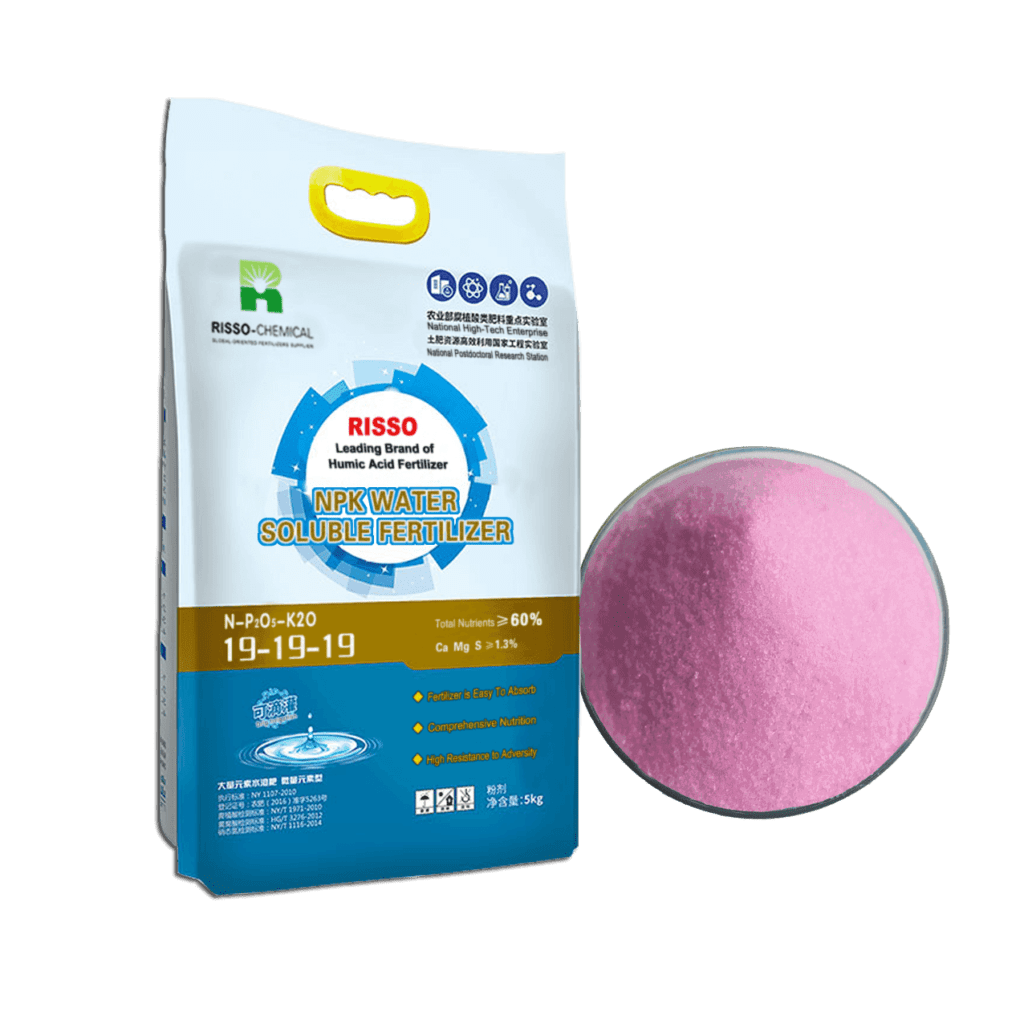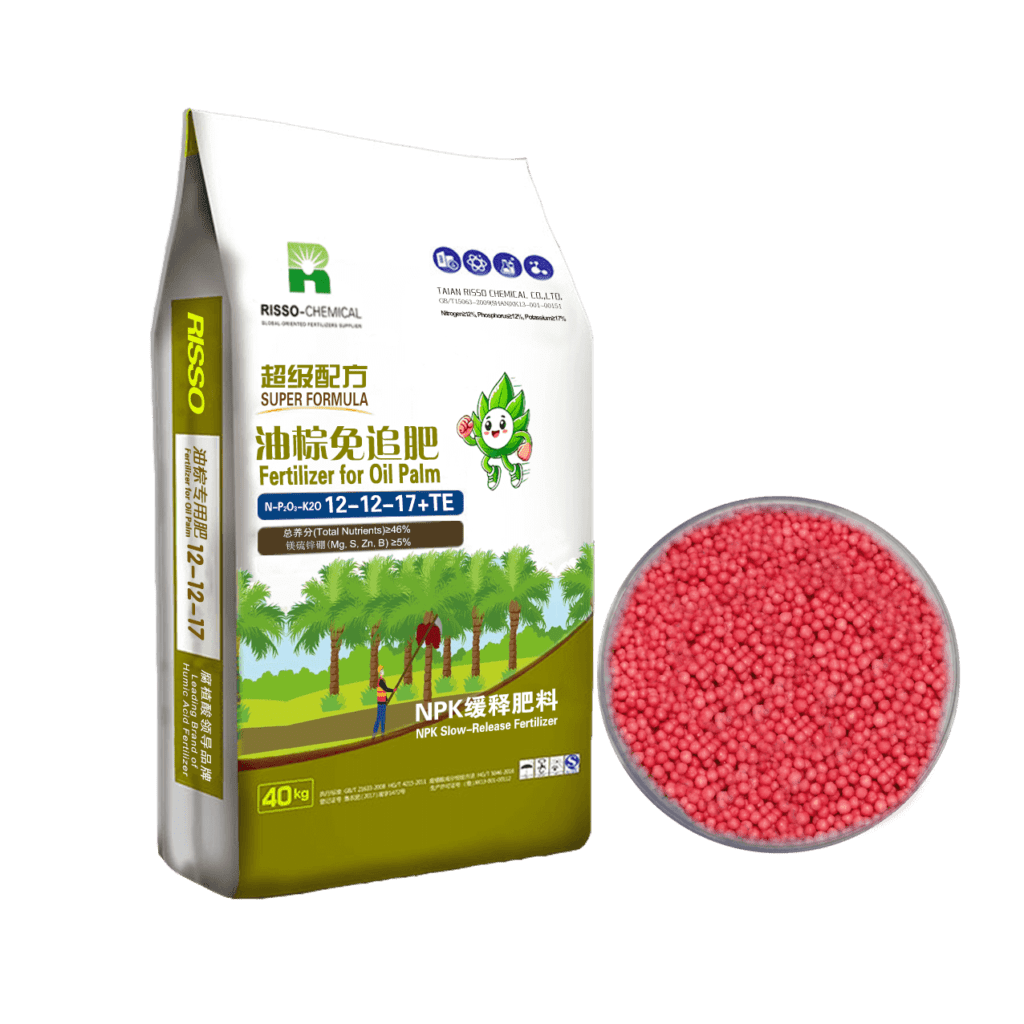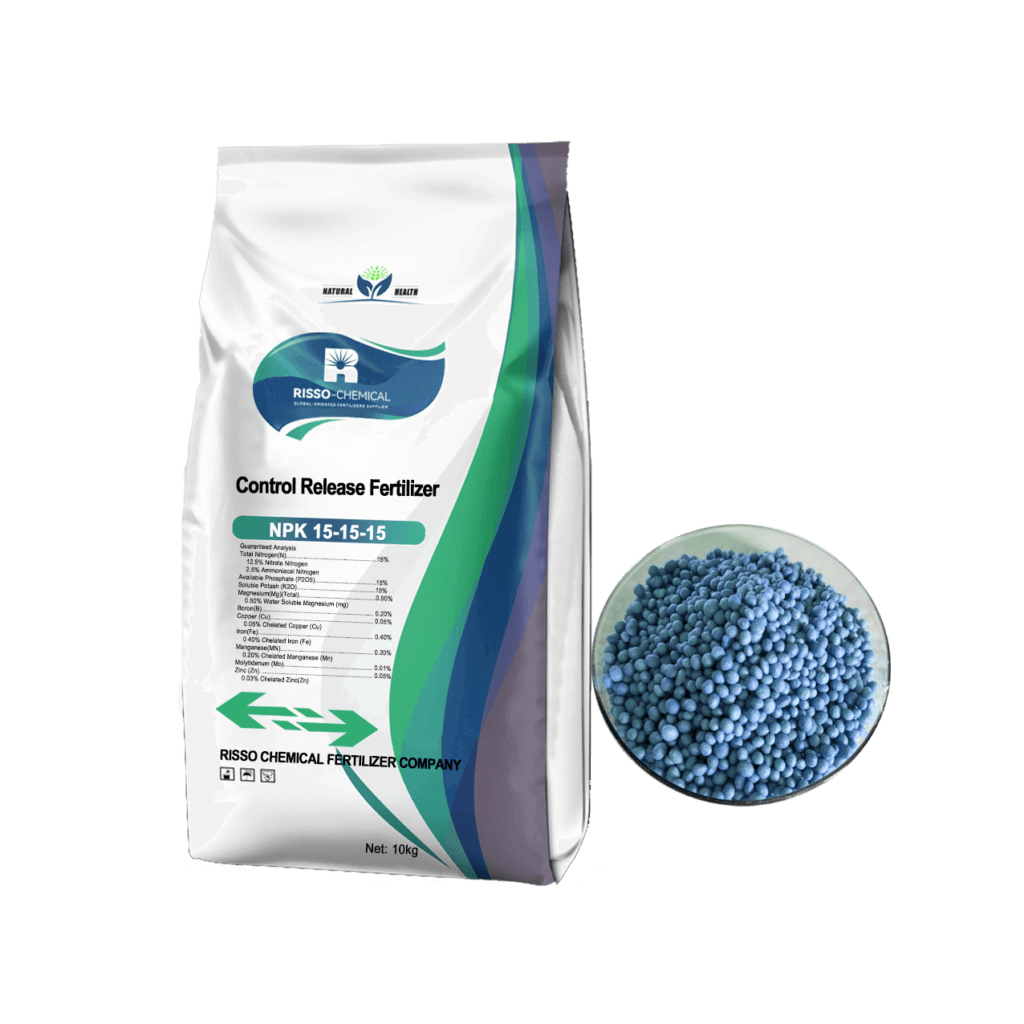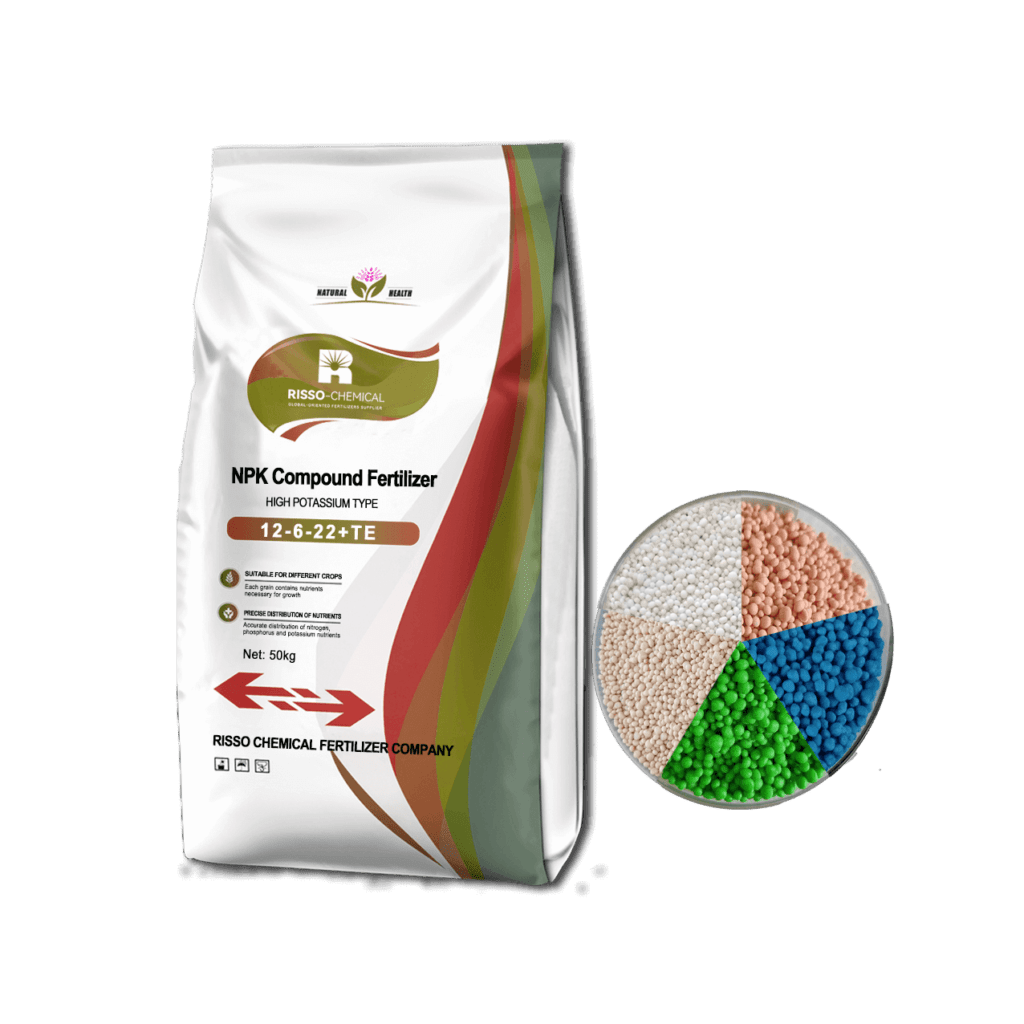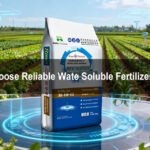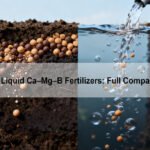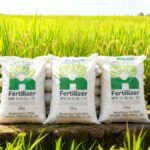Let more growers get greater benefits
What Is the Best Fertilizer for Oil Palm Trees | Risso Guide
- Industry News
- June 10, 2020
- 9:26 am
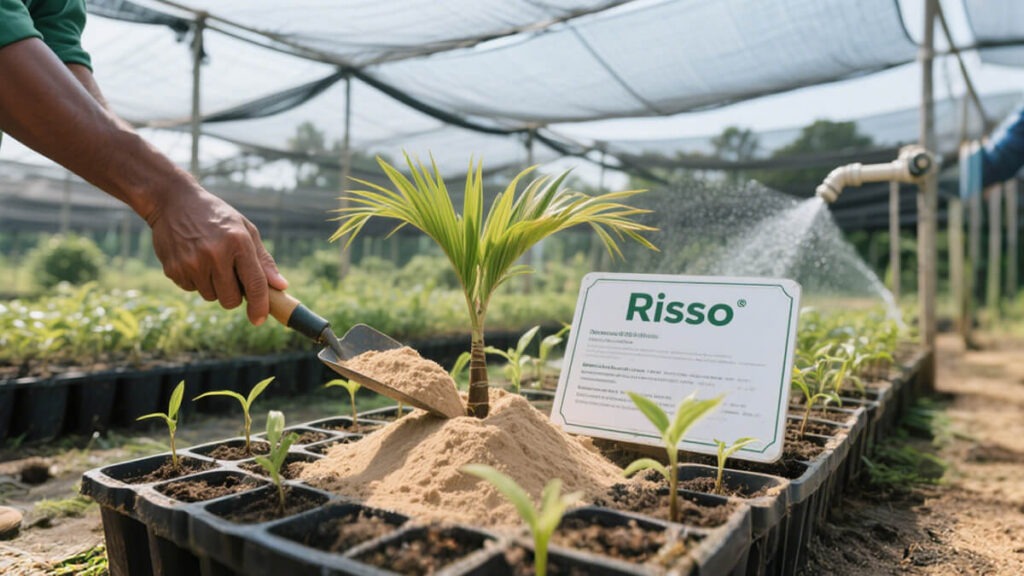

Oil palm (Elaeis guineensis) is one of the most productive and economically significant oil-producing crops in tropical regions. To sustain high yields and healthy growth, oil palm trees require well-balanced nutrition throughout their lifecycle. The application of appropriate fertilizers not only enhances fruit production but also improves overall tree vigor and resistance to diseases. In this blog, we explore the best fertilizer for oil palm trees, backed by scientific recommendations and practical field data.
This comprehensive guide by Risso will also help you understand nutrient requirements, application timing, and how to choose between various fertilizer formulations. Whether you’re a plantation manager or a smallholder farmer, the right fertilization strategy is key to boosting palm oil yield and long-term soil fertility.
Table of Contents
- 1. Understanding Nutrient Requirements of Oil Palm Trees
- 2. Recommended Fertilizer Formulas and Ratios
- 3. Best Fertilizer Types for Oil Palm Trees
- 4. Role of Micronutrients in Palm Health
- 5. Fertilization Strategy by Growth Stage
- 6. Best Practices for Fertilizer Application
- 7. Research-Backed Insights and Fertilizer Innovations
- 8. Final Recommendations and Summary
1.Understanding Nutrient Requirements of Oil Palm Trees
Oil palm trees have specific nutrient needs that vary with growth stages, soil types, and climatic conditions. A high-yielding oil palm requires the following essential elements:
Macronutrients:
Nitrogen (N): Promotes vegetative growth and leaf development.
Phosphorus (P): Vital for root development and energy transfer.
Potassium (K): Crucial for bunch formation and oil synthesis.
Magnesium (Mg): Supports chlorophyll production and photosynthesis.
Calcium (Ca): Essential for cell wall strength and nutrient uptake.
Boron (B): Affects pollen tube growth and fruit set.
Copper (Cu), Manganese (Mn), and Iron (Fe): Important for enzyme activity and chlorophyll function.
Deficiencies in these nutrients often lead to reduced yields, poor fruit quality, and visible symptoms such as yellowing, mottling, or stunted growth.
2. Recommended Fertilizer Formulas and Ratios
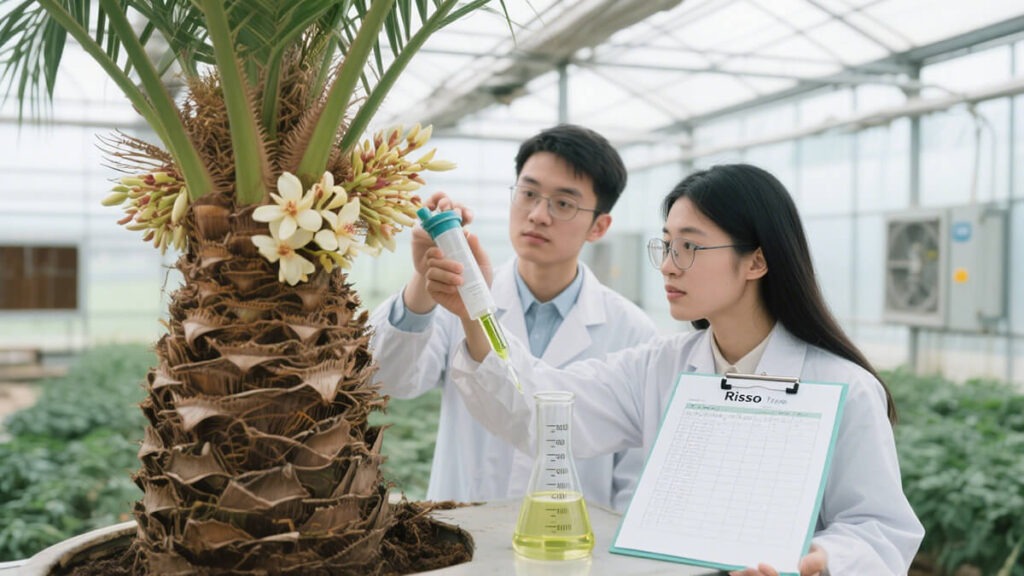

NPK Guidelines
Depending on the palm age and field conditions, standard recommendations include:
- Nitrogen (N): 0.5–1.5 kg per palm/year
- Phosphorus (P2O5): 0.3–0.8 kg per palm/year
- Potassium (K2O): 1.0–3.0 kg per palm/year
- Magnesium (MgO): 0.2–0.6 kg per palm/year
For commercial plantations, common compound fertilizers include:
- 15-15-15: Ideal for early growth stages (0–4 years)
- 12-6-22 + 4MgO + B: Widely used in mature palm plantations for sustained yield and soil health
These ratios ensure balanced nutrient uptake and prevent antagonism among nutrients. Always consider soil and leaf analysis to fine-tune the exact formulation.
3. Best Fertilizer Types for Oil Palm Trees
Slow-Release Fertilizers
Slow-release fertilizers are highly recommended for oil palm cultivation as they provide a steady nutrient supply over time, minimizing leaching and improving nutrient use efficiency. A slow-release palm tree fertilizer with high potassium and added magnesium and boron enhances fruit development and oil content.
Water-Soluble Fertilizers
Water-soluble fertilizers are suitable for nursery palms or foliar feeding, especially during periods of active growth or when quick correction of nutrient deficiencies is required. However, they demand more frequent application.
Organic Fertilizers
Incorporating organic materials like composted empty fruit bunches (EFB), manure, and palm oil mill effluent (POME) helps improve soil organic matter, microbial activity, and long-term sustainability. These materials are rich in potassium and micronutrients, making them a good supplement to synthetic fertilizers.
Using the best organic fertilizer for palm trees in combination with synthetic blends promotes both immediate productivity and long-term soil health.
4. Role of Micronutrients in Palm Health
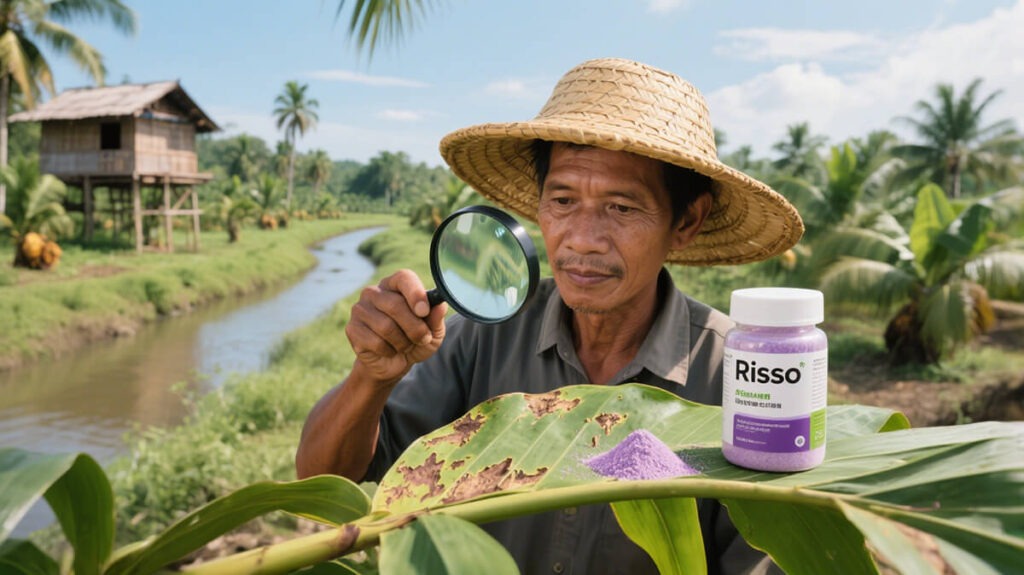

Though required in smaller quantities, micronutrients play an indispensable role in oil palm development. For example:
Magnesium deficiency causes interveinal chlorosis, especially in older fronds.
Boron deficiency leads to small, malformed leaves and fruit abortion.
Iron and manganese deficiencies result in chlorotic young leaves and reduced photosynthesis.
To avoid these issues, choose palm tree fertilizer formulas that contain chelated forms of these micronutrients for better absorption, particularly in high pH or sandy soils.
5.Fertilization Strategy by Growth Stage
A site-specific fertilization strategy based on palm age, yield potential, and environmental conditions leads to optimal results:
Nursery Stage (0–1 year): Use soluble fertilizers (e.g., 20-20-20 or 19-19-19) applied weekly.
Immature Stage (1–4 years): Apply balanced granular fertilizers (e.g., 15-15-15) quarterly to support vegetative growth.
Mature Stage (5+ years): Switch to high-K fertilizers (e.g., 12-6-22 + Mg + B) to enhance fruit bunch production and oil yield.
Regular leaf sampling and soil testing help determine precise fertilizer needs and reduce waste.
6.Best Practices for Fertilizer Application
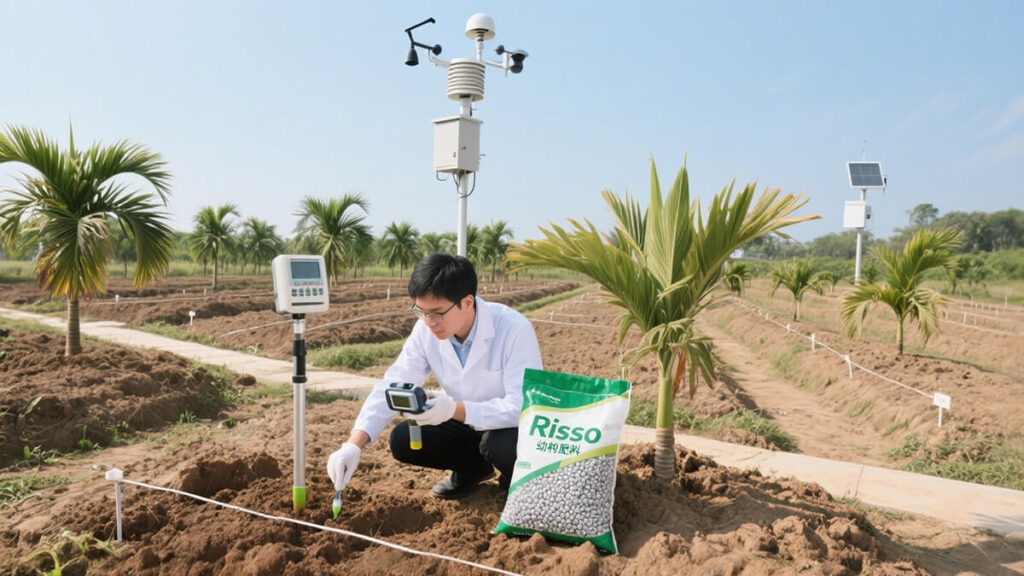

To maximize fertilizer efficiency in oil palm plantations:
Application Frequency: 2–4 times annually, depending on soil texture and rainfall.
Method: Distribute fertilizer in a circular band 1–2 meters from the trunk.
Timing: Avoid applications during dry spells; apply before rain or irrigate post-application.
Mulching: Use fronds, bunch ash, and EFB to retain moisture and recycle nutrients.
Incorporating these best practices ensures that palm trees receive the best nutrients when they need them the most.
7. Research-Backed Insights and Fertilizer Innovations
Recent studies have shown that combining macro and micro-nutrients significantly improves palm height, trunk girth, and fresh fruit bunch (FFB) yield. Systems such as PORIM’s INFERS (Intelligent Fertilizer Recommendation System) enable precision fertilization based on leaf and soil data.
Risso is committed to offering innovative fertilizer solutions backed by agronomic research, including customizable NPK blends and controlled-release formulations for sustainable palm cultivation.
8. Final Recommendations and Summary
| Key Aspect | Recommended Practice |
|---|---|
| Best NPK Ratio | 15-15-15 for young palms; 12-6-22 + Mg + B for mature |
| Fertilizer Type | Slow-release with micronutrients |
| Organic Supplement | Use EFB, compost, or POME for soil enrichment |
| Micronutrient Focus | Include B, Mg, Mn, Fe, and Cu in fertilizer blends |
| Application Method | Band application beyond canopy edge; 2–4x/year |
Choosing the best fertilizer for oil palm trees involves more than just selecting an NPK ratio. It requires a holistic understanding of palm nutrition, soil health, environmental conditions, and agronomic timing.
Risso’s oil palm fertilizer solutions are designed with all these factors in mind—helping growers achieve higher yields, healthier palms, and sustainable profits.
For more information about Risso’s complete range of oil palm fertilizer or to request a customized recommendation, contact risso team today.
Related Tobacco Fertilizers
- Article
What will you get when touch?
✔ Quick & helpful reply within 6 hours.
✔ Tailored solutions for your project.
✔ One-stop product, tech, market
TRENDING
TAIAN RISSO CHEMICAL FERTILIZER CO.,LTD
- Address: High-tech Development Zone, Taian City, Shandong Province
© Copyright 2017 RISSO CHEMICAL. All Rights Reserved.



